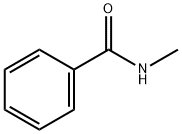3-PYRIDINECARBOXAMIDE, 6-(3-FLUOROPHENYL)-N-[1-(2,2,2-TRIFLUOROETHYL)-4-PIPERIDINYL]-
- CAS NO.:1033836-12-2
- Empirical Formula: C19H19F4N3O
- Molecular Weight: 381.37
- MDL number: MFCD18206776
- SAFETY DATA SHEET (SDS)
- Update Date: 2024-10-30 20:13:01
![3-PYRIDINECARBOXAMIDE, 6-(3-FLUOROPHENYL)-N-[1-(2,2,2-TRIFLUOROETHYL)-4-PIPERIDINYL]- Structural](https://img.chemicalbook.in/CAS/GIF/1033836-12-2.gif)
What is 3-PYRIDINECARBOXAMIDE, 6-(3-FLUOROPHENYL)-N-[1-(2,2,2-TRIFLUOROETHYL)-4-PIPERIDINYL]-?
Biological Activity
hpgds inhibitor 1 is an oral potent and selective inhibitor of hematopoietic prostaglandin d synthase (hpgds) with ic50 value of 0.7nm [1].prostaglandin d2 (pgd2) is a mediator of allergy and inflammation. it is isomerized from pgh2 by pgds. this production is important in airway allergic and inflammatory processes. hpgds inhibitor 1 has a 3-fluorine substituent, making it stable in the in vitro human microsome assay. it has potent effects in enzyme assay and cellular assay with ic50 values of 0.7nm and 32nm, respectively. in addition, the potency is equal against purified hpgds from various species with ic50 values ranging from 0.5-2.3nm. besides that, hpgds inhibitor 1 is selective against hpgds over other relevant human enzymes including l-pgds, mpges, cox-1, cox-2 and 5 lox [1].in a model of antigen-induced airway response in allergic sheep, treatment of hpgds inhibitor 1 completely prevents the late asthma reaction and blocks the airway hyper-responsiveness [1].
in vitro
HPGDS inhibitor 1 has equal potency against purified HPGDS from human, rat, dog, and sheep (IC 50 , 0.5-2.3 nM).
in vivo
HPGDS inhibitor 1 (compound 8; 1 mg/kg) has excellent PK characteristics with 76% bioavailability, and the T 1/2 is 4.1 hours in rats.
Rats dosed orally with 1 mg/kg and 10 mg/kg HPGDS inhibitor 1 (compound 8) are sacrificed at various times. Oral administration of it blocks PGD2 production in the rat spleen; inhibition of PGD2 is inversely correlated with the plasma concentration of it in a time- and dose-dependent manner.
It (compound 8; 1 mg/mL) illustrates efficacy in an in vivo sheep model of asthma.
References
[1] carron c p, trujillo j i, olson k l, et al. discovery of an oral potent selective inhibitor of hematopoietic prostaglandin d synthase (hpgds). acs medicinal chemistry letters, 2010, 1(2): 59-63.
Properties of 3-PYRIDINECARBOXAMIDE, 6-(3-FLUOROPHENYL)-N-[1-(2,2,2-TRIFLUOROETHYL)-4-PIPERIDINYL]-
| Boiling point: | 487.2±45.0 °C(Predicted) |
| Density | 1.33±0.1 g/cm3(Predicted) |
| storage temp. | 2-8°C |
| solubility | Soluble in DMSO |
| form | crystalline solid |
| pka | 9.55±0.20(Predicted) |
| color | White to off-white |
Safety information for 3-PYRIDINECARBOXAMIDE, 6-(3-FLUOROPHENYL)-N-[1-(2,2,2-TRIFLUOROETHYL)-4-PIPERIDINYL]-
Computed Descriptors for 3-PYRIDINECARBOXAMIDE, 6-(3-FLUOROPHENYL)-N-[1-(2,2,2-TRIFLUOROETHYL)-4-PIPERIDINYL]-
New Products
4-AMINO-TETRAHYDRO-PYRAN-4-CARBOXYLIC ACID HCL 4-Aminotetrahydropyran-4-carbonitrile Hydrochloride (R)-3-Aminobutanenitrile Hydrochloride 3-(dimethylamino)-9,10-dimethoxy-1,3,4,6,7,11b-hexahydro-2H-pyrido[2,1-a]isoquinolin-2-one Iminostilbene 1,4-Dioxa-8-azaspiro[4.5]decane 5-Bromo-2-nitropyridine 4-(Dimethylamino)tetrahydro-2H-pyran-4-carbonitrile SODIUM AAS SOLUTION ZINC AAS SOLUTION BUFFER SOLUTION PH 10.0(BORATE) GOOCH CRUCIBLE SINTERED AQUANIL 5 BERYLLIUM AAS SOLUTION Methylcobalamin (vitamin B12) SODIUM METHYL PARABEN Diclofenac Sodium SODIUM VALPROATE Racecadotril XANTHAN GUM 5-Fluoro-2-iodo-3-methylphenol 4-(Cyanomethyl)-1-piperidineacetamide 6-Bromo-2-iodo-4-methyl-3-pyridinamine 5-Amino-3-bromo-2-chlorobenzeneacetic acidRelated products of tetrahydrofuran
You may like
-
 HPGDS Inhibitor I >95% CAS 1033836-12-2View Details
HPGDS Inhibitor I >95% CAS 1033836-12-2View Details
1033836-12-2 -
 1823754-06-8 98%View Details
1823754-06-8 98%View Details
1823754-06-8 -
 2-Chloro-5-(iodomethyl)pyrimidine 2268818-88-6 98%View Details
2-Chloro-5-(iodomethyl)pyrimidine 2268818-88-6 98%View Details
2268818-88-6 -
 2092793-98-9 98%View Details
2092793-98-9 98%View Details
2092793-98-9 -
 1360944-55-3 7-Methoxy-1H-indol-5-amine 98%View Details
1360944-55-3 7-Methoxy-1H-indol-5-amine 98%View Details
1360944-55-3 -
 2090480-14-9 98%View Details
2090480-14-9 98%View Details
2090480-14-9 -
![1-Methyl 2-bromo-5-[(1-carboxy-1-methylethyl)amino]benzoate 1651844-56-2 98%](https://img.chemicalbook.in//Content/image/CP5.jpg) 1-Methyl 2-bromo-5-[(1-carboxy-1-methylethyl)amino]benzoate 1651844-56-2 98%View Details
1-Methyl 2-bromo-5-[(1-carboxy-1-methylethyl)amino]benzoate 1651844-56-2 98%View Details
1651844-56-2 -
 176445-77-5 4-(Dimethylamino)tetrahydro-2H-pyran-4-carbonitrile 98+View Details
176445-77-5 4-(Dimethylamino)tetrahydro-2H-pyran-4-carbonitrile 98+View Details
176445-77-5

